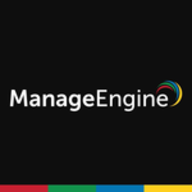

ManageEngine Applications Manager and Splunk Observability Cloud are products in the IT infrastructure monitoring and data observability category. Splunk Observability Cloud appears to have the upper hand with its advanced features and handling of significant data volumes, making it more suitable for large-scale, enterprise-level deployments.
Features: ManageEngine Applications Manager provides application performance monitoring, server monitoring, and alerting features essential for operational continuity. It also offers the ability to monitor databases, web servers, and ERP systems, with out-of-the-box support for over 80 applications and servers. Additionally, it can perform monitoring in agentless mode, contributing to its flexibility. Splunk Observability Cloud excels in real-time data analysis and visualization, crucial for complex environments. It handles large data volumes efficiently and offers seamless integration across various systems. Its application performance monitoring (APM) capabilities and advanced log analytics make it valuable for comprehensive observability.
Room for Improvement: ManageEngine Applications Manager could improve in terms of providing a more unified view of monitoring data and expanding on its current APM features to cater to larger enterprises. It may also benefit from enhancing its integration capabilities with third-party tools. Meanwhile, Splunk Observability Cloud could work on simplifying its complex deployment process to make it more accessible for smaller organizations. Enhancements in pricing transparency and user interface navigation would also add value.
Ease of Deployment and Customer Service: ManageEngine Applications Manager is recognized for its straightforward deployment, with strong customer service that effectively addresses setup issues. Splunk Observability Cloud's deployment is more complex due to its vast capabilities, but robust customer service supports integration. ManageEngine focuses on a user-friendly setup process, while Splunk provides extensive support structures to navigate its complexities.
Pricing and ROI: ManageEngine Applications Manager is often chosen for its competitive pricing and substantial ROI, as it provides vital features without heavy financial investment. In contrast, Splunk Observability Cloud entails a higher initial cost but delivers justified ROI when its comprehensive features are fully utilized. ManageEngine offers a budget-friendly choice for essential monitoring, whereas Splunk justifies its premium pricing with extensive functionality and enterprise performance enhancements.


ManageEngine Applications Manager is an application performance management (APM) solution that is designed to give users deep insights into both the way that their applications perform and the way that users of those applications experience them. Organizations can use this solution to identify areas where their critical applications are lacking and address them before there are any negative repercussions. ManageEngine Applications Manager is the kind of tool that companies of all sizes can use to keep their applications running in the best way possible.
ManageEngine Applications Manager Benefits
Some of the ways that organizations can benefit by deploying ManageEngine Applications Manager include:
ManageEngine Applications Manager Features
Some of the many useful features ManageEngine Applications Manager has to offer include:
Reviews from Real Users
ManageEngine Applications Manager is a solution that stands out when it is compared to many of its competitors. It is part of a complete suite of management tools that users can take advantage of. The way that ManageEngine Applications Manager keeps up to date with a regular schedule of software updates enables organizations to manage their applications without worrying that they are missing any important capabilities or features. If any feature is absent, users can integrate the solution with other monitoring solutions. ManageEngine Applications Manager regularly undergoes updates that ensure that users have access to all of the latest features and patches.
Rodrigo T., the CEO of AXIOVISTA spa, writes, “This solution is a part of a complete suite of management tools. So, it can be integrated with other solutions for monitoring networks, which is very important. You can expand it or interconnect it with many other tools, which is a powerful feature.”
Syed A., the enterprise senior account manager of sales at a tech services company, writes, “Our customers appreciate that ManageEngine sends regular updates, upgrading their software several times a year.”
Splunk Observability Cloud combines log search, data integration, and dashboards for seamless monitoring, enhancing infrastructure visibility and security. Its cloud integration and scalability support diverse environments, improving operational efficiency.
Splunk Observability Cloud offers comprehensive monitoring tools with user-friendly interfaces, enabling end-to-end infrastructure visibility. Its real-time alerting and predictive capabilities enhance security monitoring, while centralized dashboards provide cross-platform visibility. Users benefit from fast data integration and extensive insights into application performance. Despite its advantages, improvements could be made in integration with other tools, data reliability, scalability, and cost management. Users face challenges in configuration complexity and require better automation and endpoint protection features. Enhancing AI integration, alerts, and adaptation for high-throughput services could further improve usability.
What are the key features of Splunk Observability Cloud?In industries like finance and healthcare, Splunk Observability Cloud is implemented for application performance monitoring and infrastructure metrics. Its ability to track incidents and analyze machine data benefits network infrastructure, while distributed tracing and log analysis aid in tackling security threats. Organizations often integrate it for compliance and auditing purposes, enhancing visibility into network traffic and optimizing performance.
We monitor all Application Performance Monitoring (APM) and Observability reviews to prevent fraudulent reviews and keep review quality high. We do not post reviews by company employees or direct competitors. We validate each review for authenticity via cross-reference with LinkedIn, and personal follow-up with the reviewer when necessary.